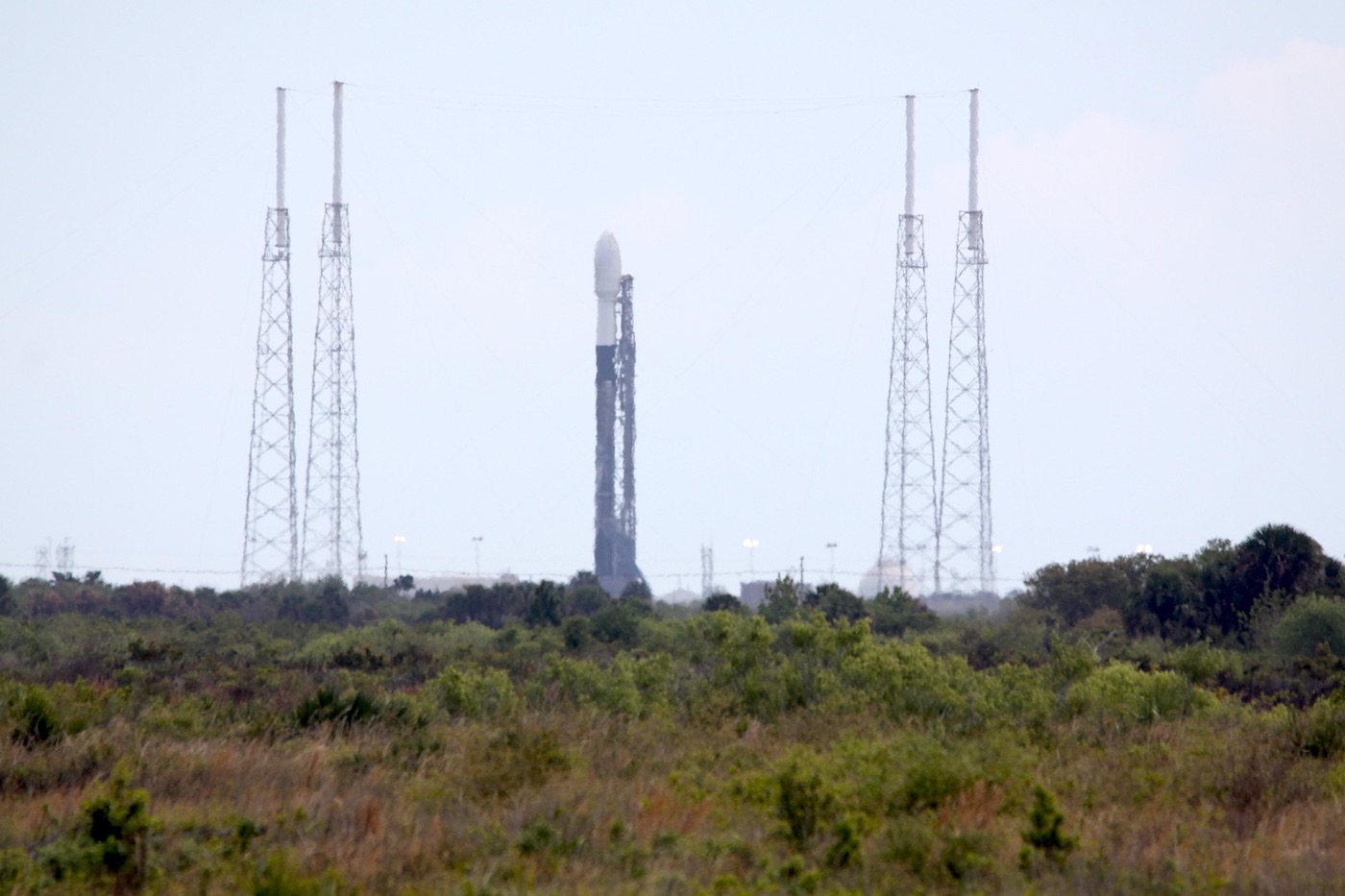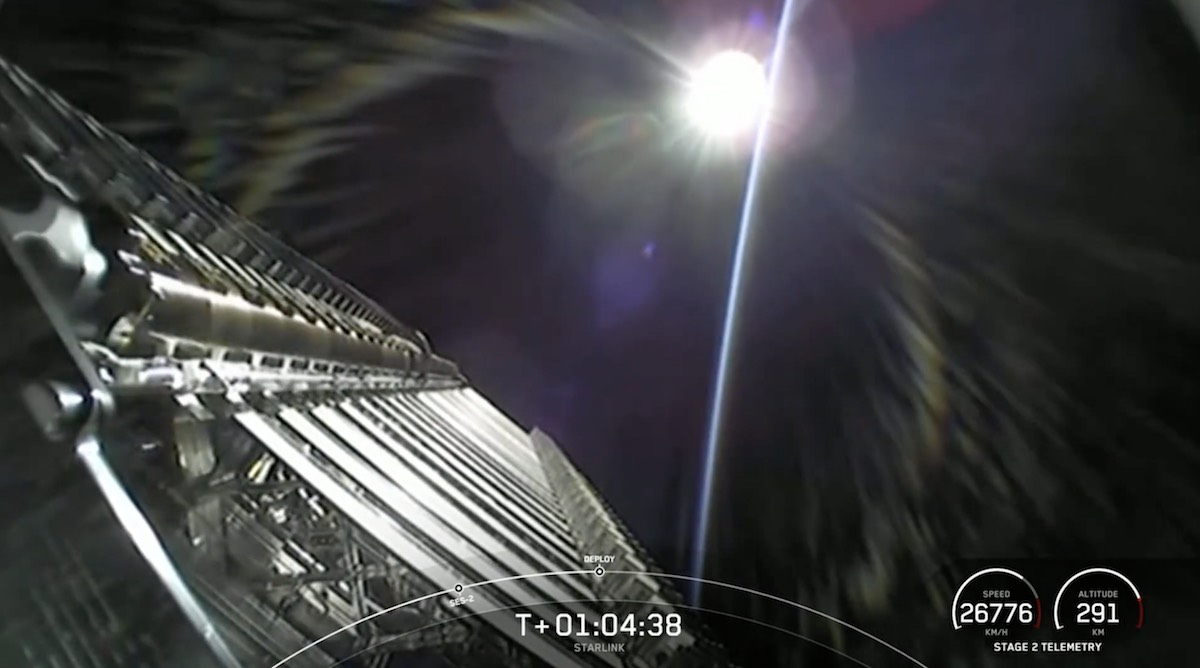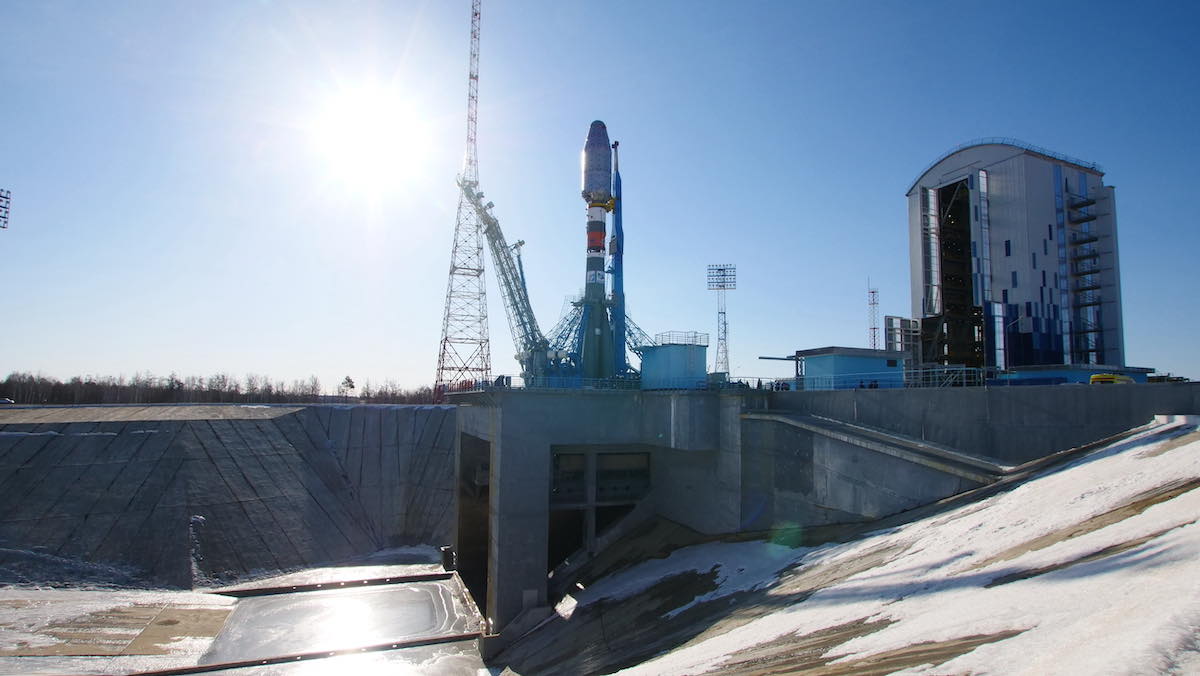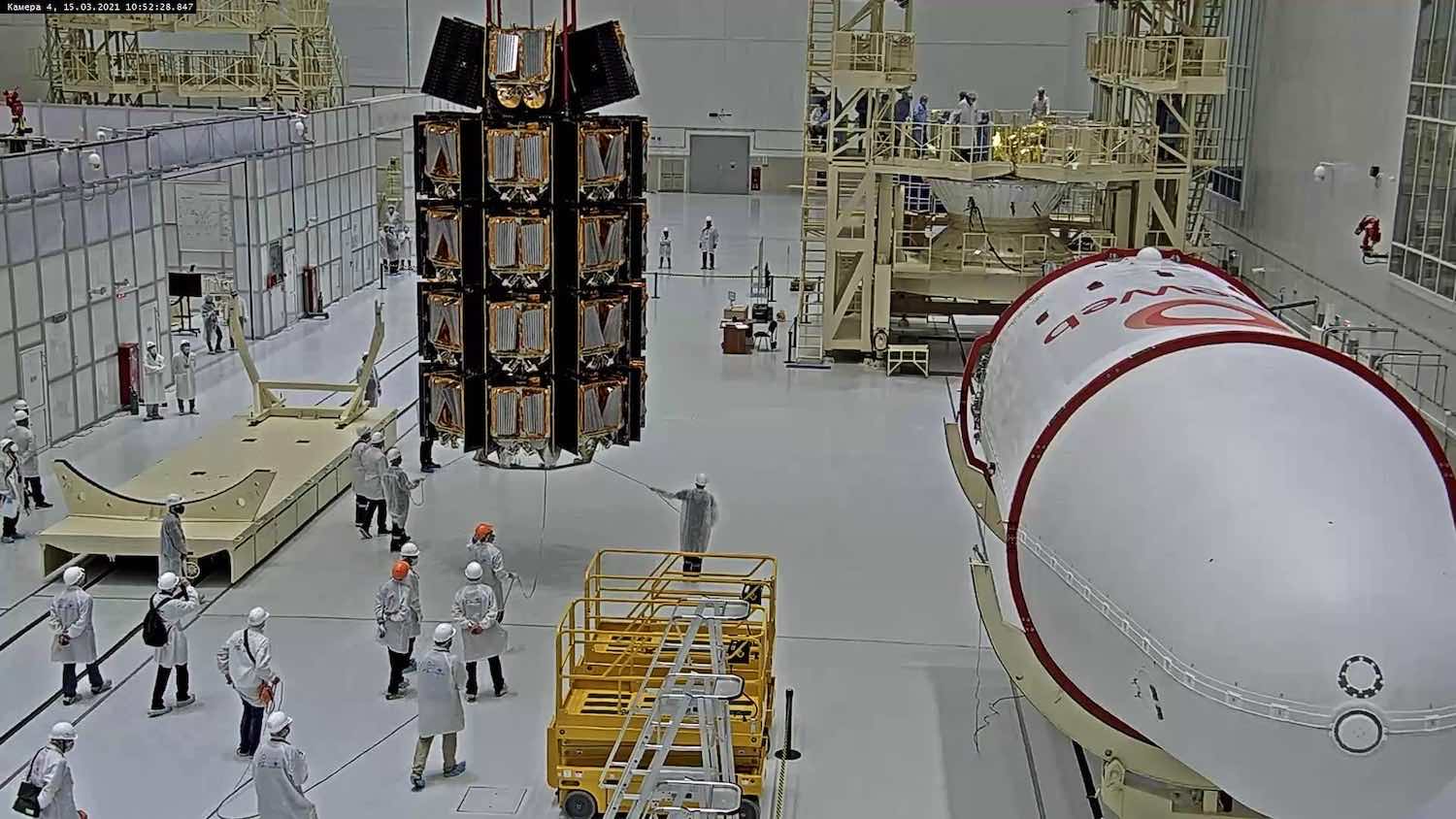
SpaceX and OneWeb — space industry rivals and owners of two of the largest fleets of commercial satellites — are set to add more spacecraft to their internet networks Wednesday with launches from Cape Canaveral and Russia.
A Falcon 9 rocket is standing on its launch pad at Cape Canaveral Space Force Station for liftoff at 4:28 a.m. EDT (0828 GMT) Wednesday with the next batch of 60 Starlink satellites, bringing the total number of Starlink spacecraft launched to date to 1,385.
Meanwhile, halfway around the world, a Russian Soyuz-2.1b rocket is standing on its launch pad at Vostochny Cosmodrome in Russia’s Far East to place 36 more OneWeb internet satellite into orbit. Liftoff of the Soyuz rocket is scheduled for 10:47 p.m. EDT Wednesday (0247 GMT; 11:47 a.m. Vostochny time Thursday), and with this mission, OneWeb will have 146 satellites in orbit.
Both companies have a Florida connection. SpaceX has launched all of its Starlink satellites from Florida’s Space Coast, and OneWeb builds its spacecraft in a factory just outside the gates of the Kennedy Space Center.
The Falcon 9 launch set for the predawn hours Wednesday will be SpaceX’s ninth mission from Florida this year, and the seventh dedicated to the Starlink network this year. It will be the 23rd dedicated Starlink launch since May 2019.
For OneWeb, the launch Wednesday will be the fifth dedicated Soyuz flight for the OneWeb constellation, and the first of the year.
SpaceX and OneWeb are competitors in the market to provide broadband internet services from space. Other companies, such as Amazon and Telesat, are developing their own satellite internet constellations, but neither has started deploying operational spacecraft. So far, SpaceX is closest to entering commercial service, followed by OneWeb.
The commercial ventures are designed to beam internet signals to underserved communities, commercial and military ships and aircraft, and other remote customers.
SpaceX’s early focus has been on the consumer broadband market, but the U.S. military has tested out Starlink services. OneWeb’s has emphasized selling services to governments and companies.
Using its own fleet of reusable Falcon 9 boosters, SpaceX has jumped far ahead of OneWeb in launching satellites. But SpaceX’s Starlink network, which flies closer to Earth, requires more satellites to provide global service than OneWeb’s fleet.

The Starlink network could eventually number more than 10,000 satellites, but the first tranche of Starlinks will have 1,584 satellites orbiting 341 miles (550 kilometers) above Earth on paths tilted 53 degrees to the equator.
After heading northeast from Cape Canaveral, the Falcon 9 mission early Wednesday will deliver the next 60 flat-panel Starlink satellites, each with a mass of about a quarter-ton, into an orbit about 168 miles (271 kilometers) above Earth.
The Falcon 9’s first stage will aim for a vertical landing on SpaceX’s drone ship “Of Course I Still Love You” positioned around 400 miles (630 kilometers) northeast of Cape Canaveral. The booster is designated B1060 in SpaceX’s inventory, and has logged five missions to date.
Separation of the 60 satellites is scheduled about 64 minutes after liftoff, and the spacecraft will unfurl solar panels and activate their krypton ion propulsion systems to begin checkouts and orbit-raising to reach the operational constellation at an altitude of 341 miles.
SpaceX builds its Starlink satellites in Redmond, Washington.
SpaceX has approval from the Federal Communications Commission for around 12,000 Starlink satellites at a range of altitudes and inclinations, all within a few hundred miles of the planet. The low altitude enables the satellites to deliver high-speed, low-latency connectivity to customers, and helps ensure the spacecraft naturally re-enter the atmosphere faster than if they flew farther from Earth.
Starlink is already providing interim beta service across high latitude regions, such as the northern United States, Canada, and England. More Starlink launches this year will enable an expanded coverage area.
SpaceX announced earlier this month that the Starlink beta service will soon begin reaching customers in Germany, New Zealand, and in other regions of the United Kingdom, including Wales, Scotland, Northern Ireland, and northern England. Those areas could receive beta service in the “coming weeks,” SpaceX said.
SpaceX is accepting pre-orders from would-be Starlink consumers, who can pay $99 to reserve their place in line to get Starlink service when it becomes available in their area. For people in the southern United States and other lower-latitude regions, that should come by late 2021, SpaceX says.
Once confirmed, customers will pay $499 for a Starlink antenna and modem, plus $50 in shipping and handling, SpaceX says. A subscription will run $99 per month.

The launch for OneWeb late Wednesday (U.S. time) will be the company’s second mission since emerging from bankruptcy proceedings last year.
The London-based company plans to deploy an initial constellation of approximately 650 satellites using 19 Soyuz rockets. OneWeb purchased the Soyuz launches from Arianespace, which oversees Soyuz flights from the Guiana Space Center. Through its subsidiary Starsem, Arianespace also manages commercial Soyuz launch services from the Baikonur Cosmodrome in Kazakhstan, and from Vostochny.
This mission will be the seventh launch from the Vostochny Cosmodrome since Russia’s newest spaceport entered service in 2016. The cosmodrome is located in Amur Oblast in Russia’s Far East near the Chinese border.
OneWeb’s satellites are built by a joint venture between OneWeb and Airbus. The factory operated by the venture, named OneWeb Satellites, is located at Exploration Park near the Kennedy Space Center in Florida.
The Soyuz-2.1b launcher carrying the next 36 OneWeb satellites will fly north from Vostochny, and drop its liquid-fueled first stage boosters around two minutes into the mission. The rocket’s core stage — also known as its second stage — will fire around five minutes before giving way to the third stage.
At T+plus 9 minutes, 22 seconds, the third stage will release a Russian-built Fregat upper stage to perform the final maneuvers to place the OneWeb satellites into a polar orbit around 279 miles (450 kilometers) in altitude, with an inclination of 87.4 degrees.

The OneWeb spacecraft will separate in groups of four from a dispenser structure made by RUAG Space in Sweden over a two-and-a-half hour period, with the final satellites due to deploy at 2:38 a.m. EDT (0638 GMT).
The mass-produced OneWeb satellites each weigh about 325 pounds (147.5 kilograms), featuring xenon-fed ion thrusters, Ku-band and Ka-band antennas to link with customers and ground stations, and deployable solar array wings. The OneWeb satellites will use their ion thrusters to raise altitude to 745 miles (1,200 kilometers) over the next few months, where controllers will ready the spacecraft for service.
With more launches planned this year and next year, OneWeb says it could start providing commercial internet services to some regions in late 2021.
Email the author.
Follow Stephen Clark on Twitter: @StephenClark1.



